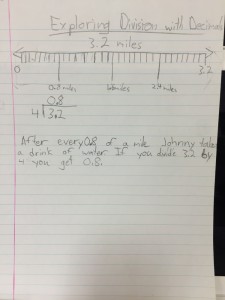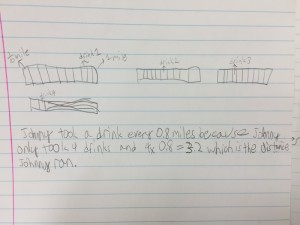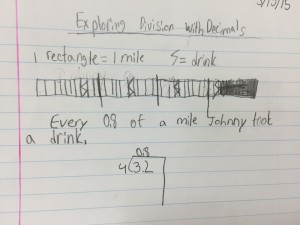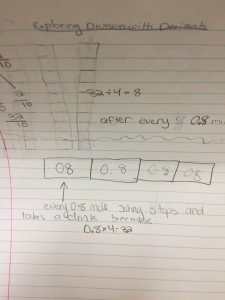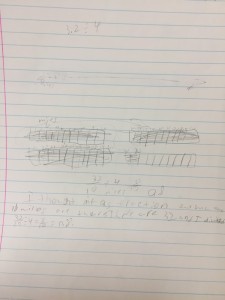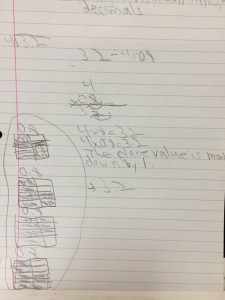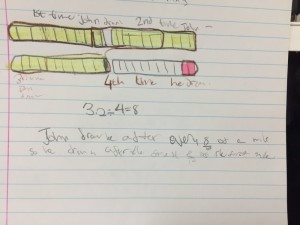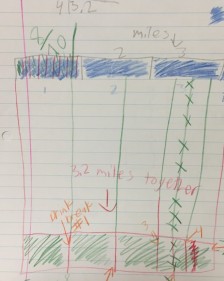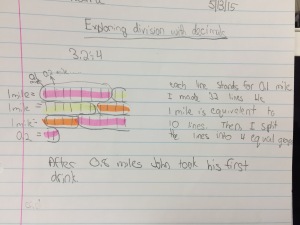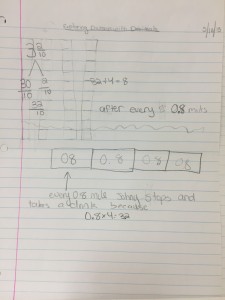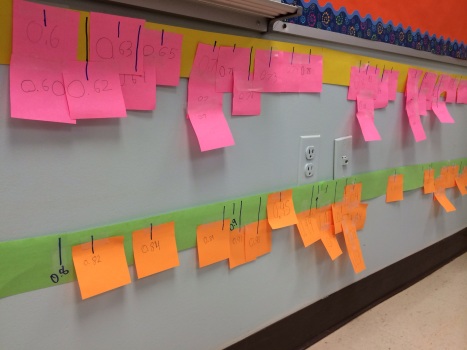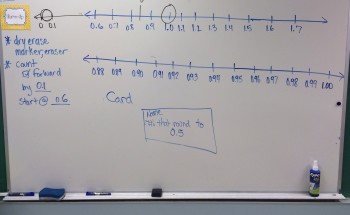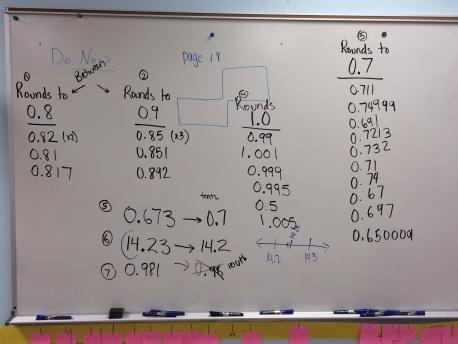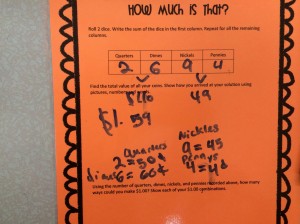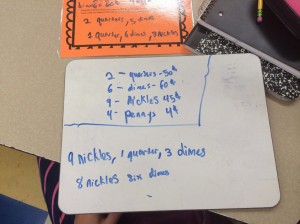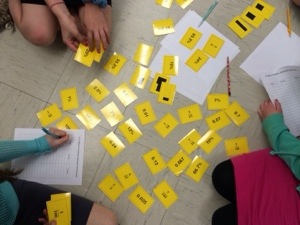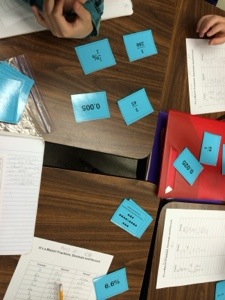One of the crazy things about me is that until all of the organizational components of the school year are addressed, it is impossible for me to prepare for those first few days of school. My first priority is always a plan book. Finding one that suits my schedule and needs has been impossible, so last year I created my own. This year’s version is similar to last’s, but has some awesome modification. After perusing the internet and Pinterest, I improved my monthly calendar, refined the “List” spaces, specified “Notes” sections, and created a pocket folder. When all was printed out, my book and I headed to Office Depot for binding (with a clear plastic cover and black back page).
Tired of the chevron pattern used in my previous book, I opted for quatrefoil. I am quite obsessed with this repetitive pattern that is available in a host of bright colors. Fortunately, I will teach two consecutive math periods in the same classroom for the first time in 6 years, which means decorating. And that means there will be lots of quatrefoil! (Stay tuned for a classroom tour!)
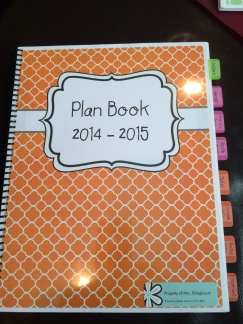 The first section of my book is “Lesson”. Supplementing the standard lesson plan pages are “Getting Ready” pages (new this year!). Often I find content on blogs or websites that I want to refer back to as the summer ends and preparation for the new year begins. “Planning Notes” pages provide space for me to jot down the tasks, activities, or random thoughts I’ve gathered along the way, as well as help me direct those thoughts towards a particular grade level.
The first section of my book is “Lesson”. Supplementing the standard lesson plan pages are “Getting Ready” pages (new this year!). Often I find content on blogs or websites that I want to refer back to as the summer ends and preparation for the new year begins. “Planning Notes” pages provide space for me to jot down the tasks, activities, or random thoughts I’ve gathered along the way, as well as help me direct those thoughts towards a particular grade level.
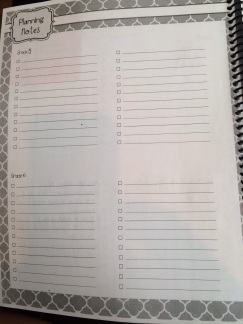
Space to plan for the beginning of the year for my 5th and 6th grade math classes.
I’m a huge fan of checklists. There is something very gratifying about placing a neat check mark in the small little box alongside a thought. All of the lists in my plan book, therefore are checklist templates. Some of the new lists that I designed are dedicated to preparing my classroom and for the first few days of school. There are handouts to print and posters to laminate, supplies to gather and decor to hang. I love having one place to record all that needs to be done. It sure beats random scraps of paper and post-it notes scattered about the house. And, when next summer rolls around, I will have a list to work off of.
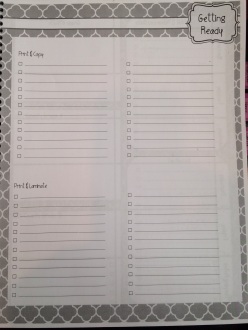
Space to list what tasks or handouts need to be printed, laminated and/or copied.

Lists to keep on top of everything needed to get my classroom set up, including any organization of the room or supplies needed.
My lesson plan pages are almost identical to last year’s. On the left-hand side there are spaces to write my 5th grade advanced math and 6th grade math plans, and a spot for planning notes. I’ve used that space in the past to jot down important information for upcoming lessons or notes for the following week.
On the right-hand side there are spaces for my math coaching responsibilities (i.e. write notes, brainstorm tasks, reflect) and of course, checklists. Last year the “To Do List” on the right ran the length of the page. Since most of my “To Do’s” referenced printing, copying and/or laminating, this year I decided on two separate lists.

Lesson plans for 5th and 6th grade are on the left-hand side and math coaching (and lists to keep on top of things) on the right.
The second section of my plan book is “Calendar”. Each month in the calendar is now a two-page spread (as opposed to the two months per page). I always wrote in all of the important meetings, closures, events, and holidays. Except last year. So this year, I opted to type all of those dates directly on to the calendar. Definitely smarter (and neater)!
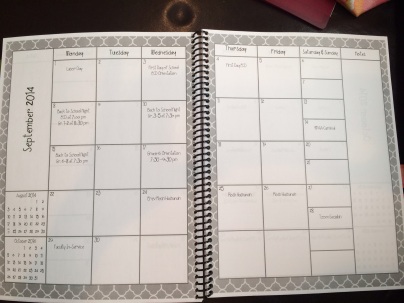
The monthly calendar has important dates included.
To encourage myself think about planning more broadly, I added some “Year at a Glance” pages.
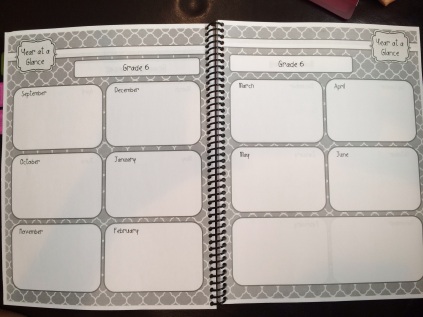
There are Year at a Glance pages for my grade 5, grade 6 and math coaching responsibilities.
The final section in my book is “Notes”. In addition to general “Notes” pages, I added identified some of them for scheduling (i.e. to keep track students in my Organizational Skills groups, math times in grades 3-5), meetings, and students.
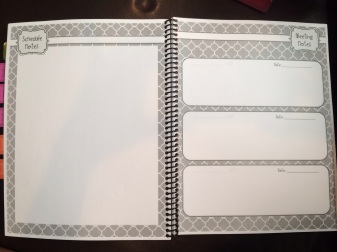
I can keep track of scheduling changes and meetings here.
My favorite addition to my book is my double-sided pocket folder made from 3 sheets of paper and joined together by some clear packing tape.
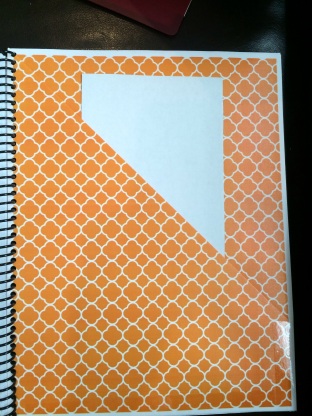 Though the entire process took a bazillion hours due to computer crashing, images not cooperating, and printer issues, I am very pleased with the results and ready to get planning!
Though the entire process took a bazillion hours due to computer crashing, images not cooperating, and printer issues, I am very pleased with the results and ready to get planning!
